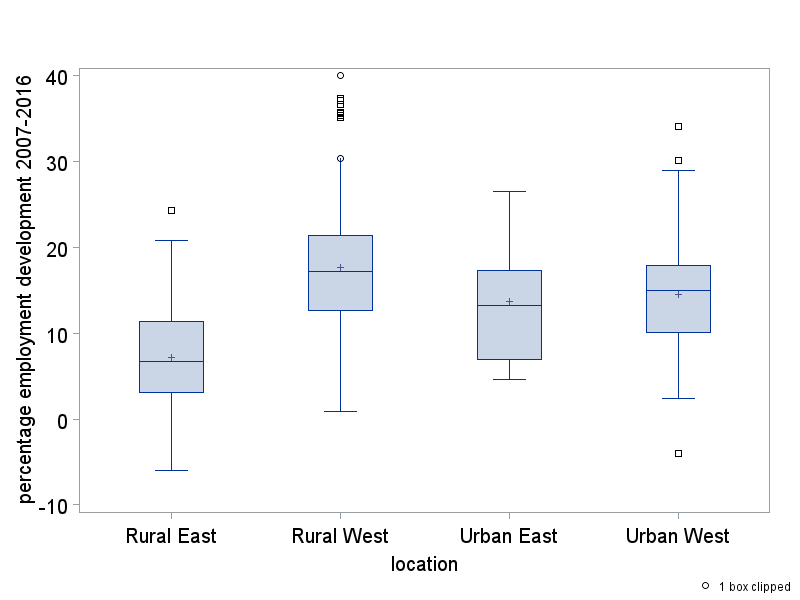The article "One economy, but different growth regimes: why Germany's rural east is still lagging" explains the different development of rural regions in the west and east of Germany by the high importance of tacit knowledge gained from experience for the competitiveness of the manufacturing sector in Germany as a high-wage location. The division of Germany meant a break in the structural development and a loss of economic experience for the east of Germany. For this reason, and because of the low spatial mobility of tacit knowledge, rural locations and companies in the east have been forced to focus on a strategy of cost leadership after reunification. This has negative consequences for the attractiveness of jobs as well as for the development of wages and job numbers. The results of nuanced analyses of data on employment development in the various industries in both western and eastern districts support the proposed explanation for the persistent disparities in the development of rural locations in the east and west.
Margarian, A. and Hundt, C. (2023), "One economy, but different growth regimes: why Germany’s rural east is still lagging", Competitiveness Review, Vol. ahead-of-print No. ahead-of-print.https://doi.org/10.1108/CR-09-2022-0130

![[Translate to English:] [Translate to English:]](/media/_processed_/6/1/csm_AdobeStock_543466681_9df3d40718.jpeg)
![[Translate to English:] [Translate to English:]](/media/_processed_/6/1/csm_AdobeStock_543466681_6eab1c26f9.jpeg)






